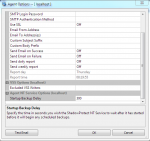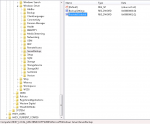Data loss can be particularly devastating for businesses in Australia, where there are strict data privacy laws that require businesses to protect their customers' data. In addition, businesses in Australia face a higher risk of natural disasters such as bushfires, floods, and storms, which can cause significant damage to physical infrastructure and lead to data … [Read more...]
Why don’t my SQL logs shrink after a backup?
I get this question often from various levels of technical people. They typically have experience with Exchange servers, and they know that after a successful backup Exchange will truncate or cleanup it’s database log files. They mistakenly think that SQL will do the same. Let’s explore why each of these takes place and what is going on here. Historically … [Read more...]
Tips to configure ShadowProtect correctly
We pickup a lot of clients that have had bad experiences with other IT resellers. As a result we get to see some pretty strange configurations that people have made which adversely affect the clients environment. Here’s a few that I’ve seen with ShadowProtect that really should NOT be done. Running missed jobs automatically – this is an option within ShadowProtect … [Read more...]
How to backup your WD Sentinel DX 4000?
One of the challenges that I’ve had with my 12TB WD Sentinel DX 4000 is how to go about backing it up. You see Microsoft only designed the inbuilt backup utility to handle up to 2TB of space, yet my WD Sentinel has 8.12TB of data storage capacity as you can see below. Likewise, as you can see, I have almost filled it with lots of data, so losing something could be a … [Read more...]
How can I enabled Server backup on my Windows Storage Server 2008 R2 Essentials server?
Windows Storage Server 2008 R2 Essentials is provided only through specific OEM. As such some OEM providers have chosen to disable the inbuilt backup utility that is used to backup the server itself. The reason vendors have chosen to do this is due to the fact that the Windows Backup utility does not support source drives or destination drives greater than 2TB in … [Read more...]



